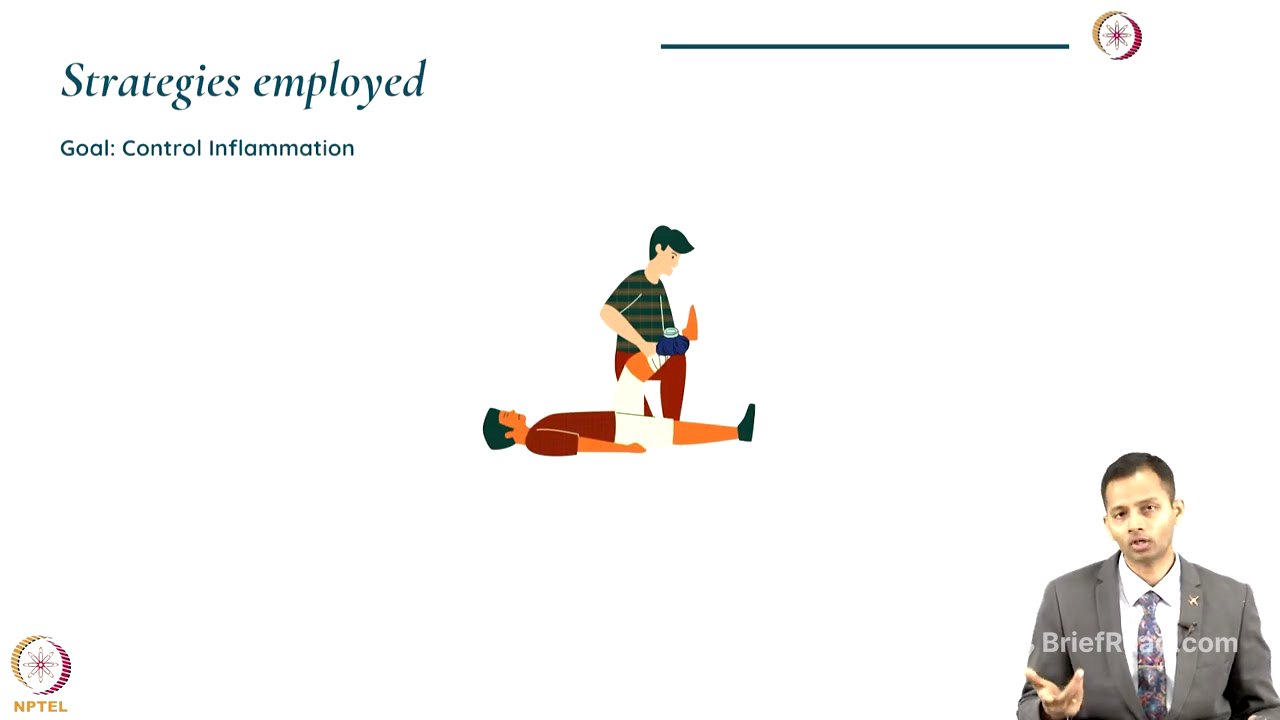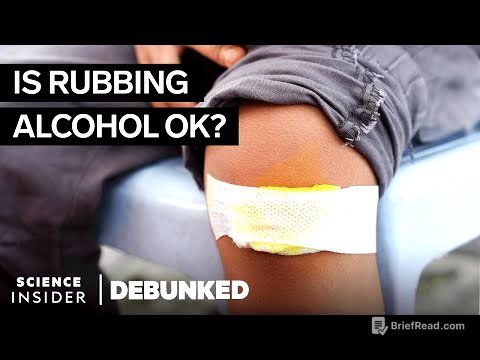TLDR;
This lecture focuses on the acute phase of rehabilitation, emphasising the goals, principles, strategies, and practical aspects of immediate onfield treatment for sports injuries. It highlights the importance of preventing further damage, controlling inflammation, managing pain, and maintaining function during this initial phase. The lecture also covers the significance of tissue healing principles, the PRICE/POLICE protocol, and the role of coaches and trainers in supporting athletes through injury and recovery.
- Prevent further damage and restore limitations.
- Protect the injured area, control inflammation and manage pain.
- Maintain function through controlled therapeutic exercise.
Introduction [0:15]
The lecture addresses the role of a coach, trainer, or therapist in providing immediate onfield treatment during the acute phase of a sports injury, such as a muscle pull. The learning objectives include understanding the aims and principles of rehabilitation during the acute phase, identifying strategies to achieve these goals, and exploring practical aspects with examples. The primary aim of phase one rehabilitation is to prevent further damage and restore limitations.
Principles of Tissue Healing and Rehabilitation Phases [1:37]
The body's response to injury progresses through phases: inflammation (3-7 days), proliferation, and remodelling. Inflammation involves redness, swelling, increased temperature, pain, and loss of function. Rehabilitation phases align with these tissue healing principles. Phase one focuses on addressing the acute phase by preventing further damage and addressing impairments caused during the immediate injury phase, while phases two and three (subacute and return to sport) are covered later. The immediate target in phase one is controlling inflammation, modulating pain, and increasing range of motion, alongside activating proprioceptors, joint stability, and initiating motor control with simple activation exercises.
Strategies Employed in Phase One [4:37]
Key strategies in phase one involve protecting the injured area using the PRICE (Protection, Rest, Ice, Compression, Elevation) or POLICE (Protection, Optimal Loading, Ice, Compression, Elevation) protocol. Protection includes avoiding activities that disrupt newly laid tissues and using aids like bandages or braces to restrict movement. For instance, using an ankle wrap during the acute phase of an ankle sprain reduces swelling and controls inflammation. Controlling inflammation involves applying ice to numb the area, decreasing metabolic rate and blood flow, using compression bandages to prevent excess blood from oozing out, and elevating the limb to drain fluid from the injured area. Optimal loading balances rest with activity to promote healing and vascularisation, such as endurance activities like upper body circuit training for a lower limb injury. It's crucial to avoid "no harm" by not applying heat, avoiding alcohol, planning balanced activities, and avoiding massage during the initial acute phase.
Pain Management [11:12]
Pain management is crucial because pain can hinder therapeutic exercise. Strategies include applying ice for 15-20 minutes, wrapped in a thin towel, every two hours for the first three days to numb the region and decrease nerve transmission. Electrotherapy modalities like transcutaneous electrical nerve stimulation (TENS) can also modulate pain by activating different nerve fibres. Simple analgesics like paracetamol (650mg) can be used, but chronic use of non-steroidal anti-inflammatory drugs (NSAIDs) should be avoided as they can decrease strength development in healing tissue. NSAIDs should only be prescribed if pain is severe and unresponsive to paracetamol.
Maintaining Function [15:01]
Maintaining function involves addressing the loss of function, a cardinal sign of inflammation. Muscles around the injured area are often inhibited as a protective response, so it's important to activate these muscles and increase range of motion. This can be achieved through passive, active-assisted, and active pain-free range of motion exercises. Manual therapies or mobilisation techniques can reduce swelling and improve joint movement. For example, in an ankle injury, gentle inversion, eversion, plantar flexion, and dorsiflexion can be performed in a controlled manner. Passive range of motion should be pain-free, and exercises can progress to active pain-free range as swelling and pain reduce. It's also important to address the range of motion in joints above and below the injured area.
Case Scenario and Implementation [20:02]
In a scenario where a football player sustains a thigh injury, the immediate management involves following the PRICE/POLICE protocol, protecting the injured part by stopping activity and unloading the area, applying compression with a crepe bandage, and using ice packs for 15-20 minutes. If swelling is present, the limb should be elevated. If there is no swelling, passive stretching can be performed for a cramp. Subsequently, medical assistance should be sought to plan further rehabilitation stages. Implementation involves addressing impairment, maximising range of motion, and considering the individual's response and the extent of the injury. Collaboration with coaches and trainers is crucial, and they should provide support to the athlete during the injury phase.
Additional Considerations and Progression to Subacute Phase [22:52]
Providing complete education to the athlete and counselling them during the acute phase is important due to the emotional impact of being unable to participate in sports. Adherence to the rehabilitation program is determined during the acute phase, and peer support can boost confidence. Progression to the subacute phase depends on activity modification, pain modulation, achieving a certain level of range of motion, and some strength gain. Objective criteria include a reduction in pain to a manageable level (e.g., 4-5 out of 10), prefixed range of motion, and objective assessment of pain and swelling reduction. Social support from coaches and administrators is vital throughout the rehabilitation process.
Summary [26:00]
The acute phase of rehabilitation starts at the site of injury, and it's important to create awareness about the PRICE/POLICE protocol for sports staff. Basic onfield management knowledge is essential for support personnel. First aid kits should include ice cubes, crepe bandages, coolants, and pain sprays. Protecting the injured part prevents complications, and controlling inflammation and pain improves adherence to the rehabilitation program. Coaches play a crucial role in supporting athletes, promoting adherence, and preventing reinjury.









